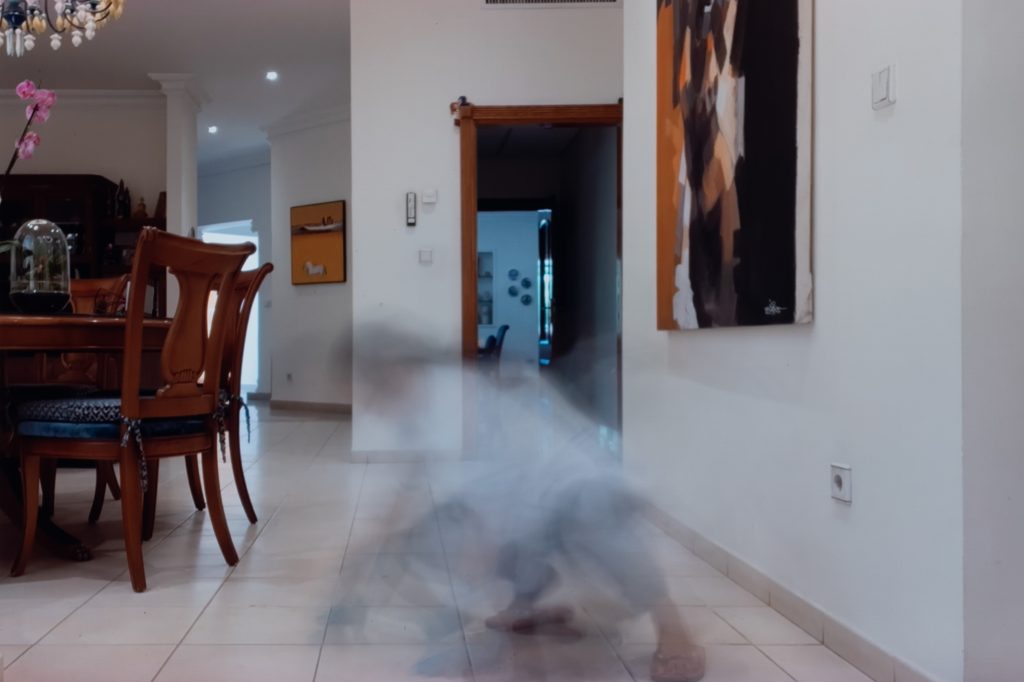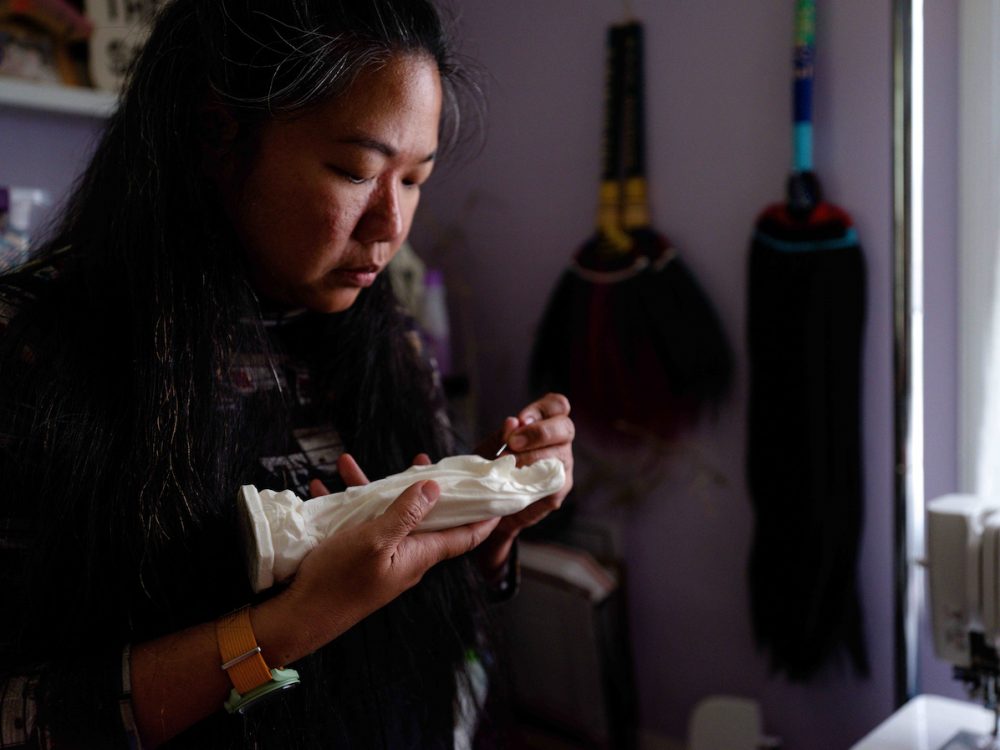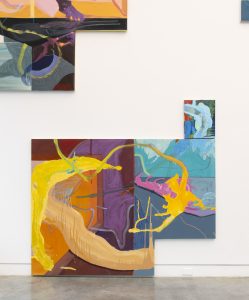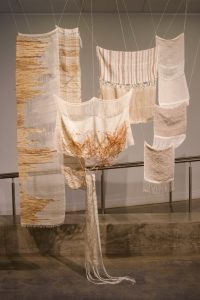Value Studies
Thea Canlas
ECU Award Recipient
Opus Art Supplies Graduation Award MFA – Winner
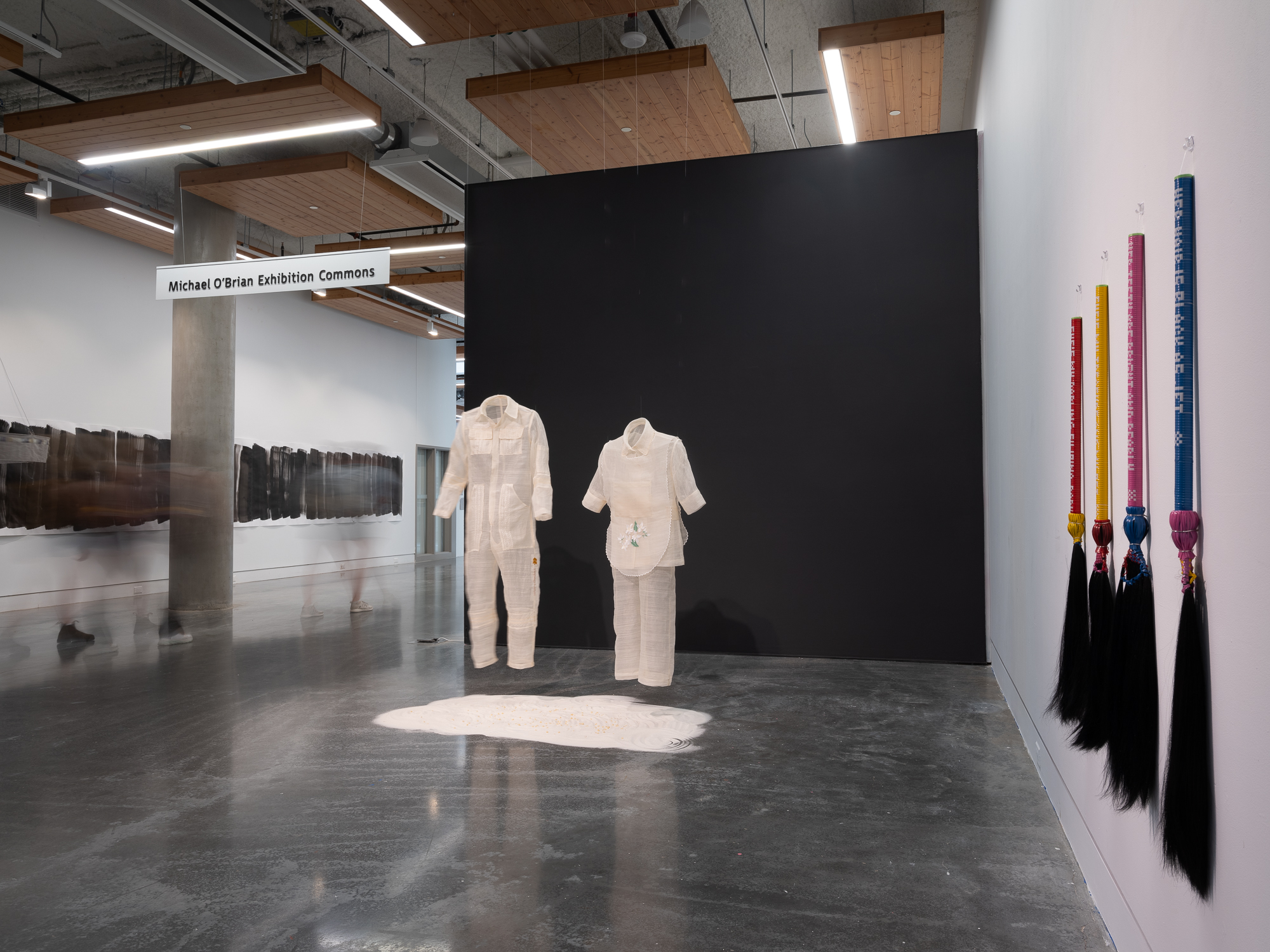
Artist’s Statement
Deep down, I am dried fish and green mangoes.
I am sugar cane grown from volcanic soil.
I am jasmine and chilis thriving in my grandma’s garden, basking in humid tropical heat.
I am the smell of tricycle diesel fumes comingling with the smoke from a sidewalk inihaw stand.
I am a story passed down about giants and tikbalangs, living in the periphery of your vision.
I am the pig’s blood that covers the bulol protecting its precious crops.
In thinking about the curiosities that drive my art practice, I think of the traces, palimpsests, and ghosts that stay and won’t leave me. I’ve traced the faint impression of something that used to have a recognizable body—a distant presence obscured by a superimposed figure that is not our own. In Avery Gordon’s Ghostly Matters, they argue that “to study social life one must confront the ghostly aspects of it.” And while “hauntings” in social realities, as Gordon describes, can call attention to what is lost, it is also the lingering impression of a repressed horror rematerializing in the present. As a first-generation Filipina-American, it is imperative that I understand how our historical memory and identity have been systemically erased, and reveal the ways this violence has informed present formations of Philippine cultural identity and human economic value.
To explore the source of these hauntings, I create installations, sculptural objects, and two-dimensional works that utilize the commodities and materials tied to different ideations of Philippine identity. Value Studies (2021-present) incorporates various materials such as traditional Philippine handicrafts, historical textiles, exported goods, human hair, and tropical fruits to interrogate the relationships between economic value and cultural narration. Out of these materials, ghosts materialize into earthly forms: the translucent uniforms of invisible laborers float in the space of the gallery; the flags of spectral nations dangle from the ceiling; brooms of human hair hang anonymously. They appear as visitations and apparitions, yet they reflect contemporary horrors.
Thesis Exhibition
Export Quality (Uniforms)
2023
Machine embroidered piña cloth, white sand, sugar, pearls, and human teeth
Overseas contract workers (OCWs), also known as overseas Filipino workers (OFWs), are Philippine nationals who work abroad, under contract, for a set period. The Philippines has one of the largest populations of OCWs—a largely unseen labor force throughout the world.
The uniforms in this installation—each for the most common contract work taken on by OFWs (domestic work and general labor on shipping boats)—are rendered ghostly by using piña cloth. I chose piña cloth as it is intrinsically tied to the Philippines’ colonization by the Spanish, who introduced the pineapple plant to the islands as a cash crop. Piña is still used for the Philippines’ designated “national costume,” the Barong Tagalog and Baro’t Saya. The embroidery on the uniforms is based on embroidery used in these “costumes.” Underneath the two uniforms is a mixture of white sand, sugar, pearls, and human teeth. They represent major exports from the Philippines, including human labor.
Photo credit: David Sloan
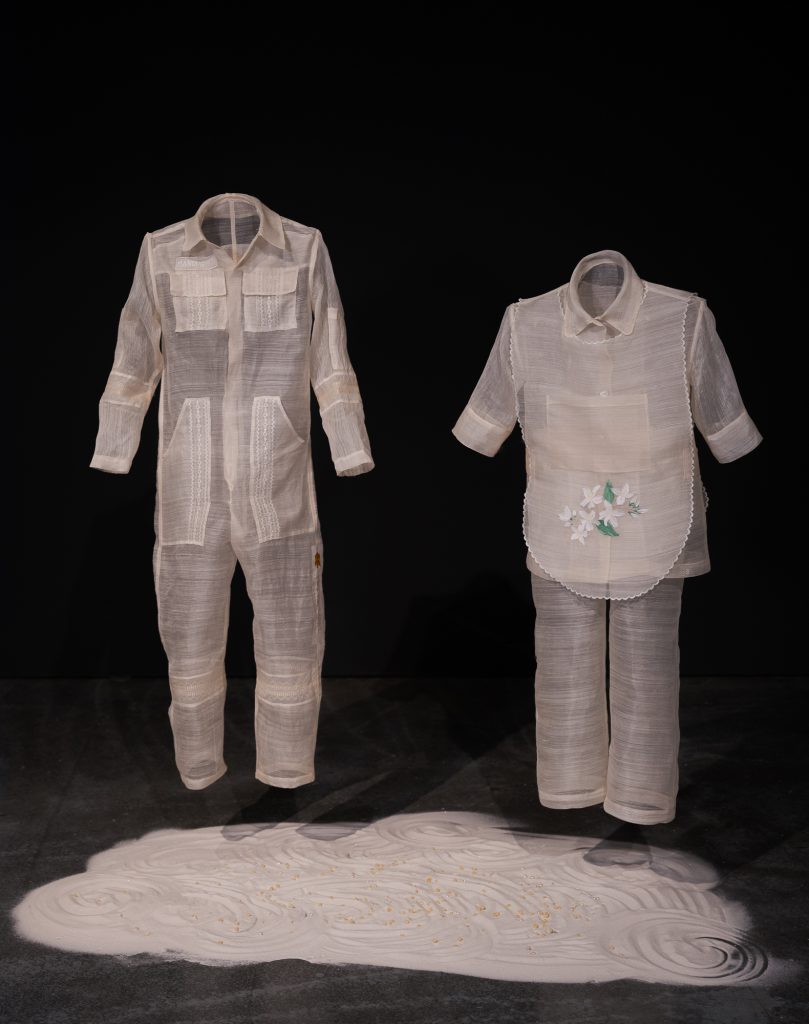
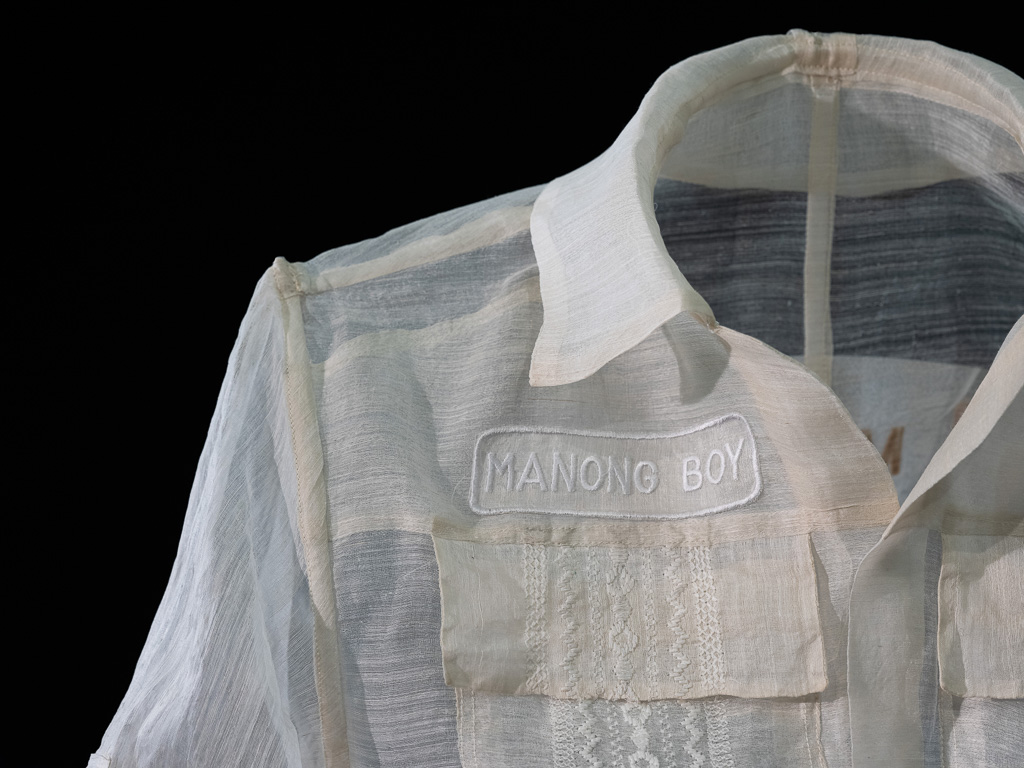


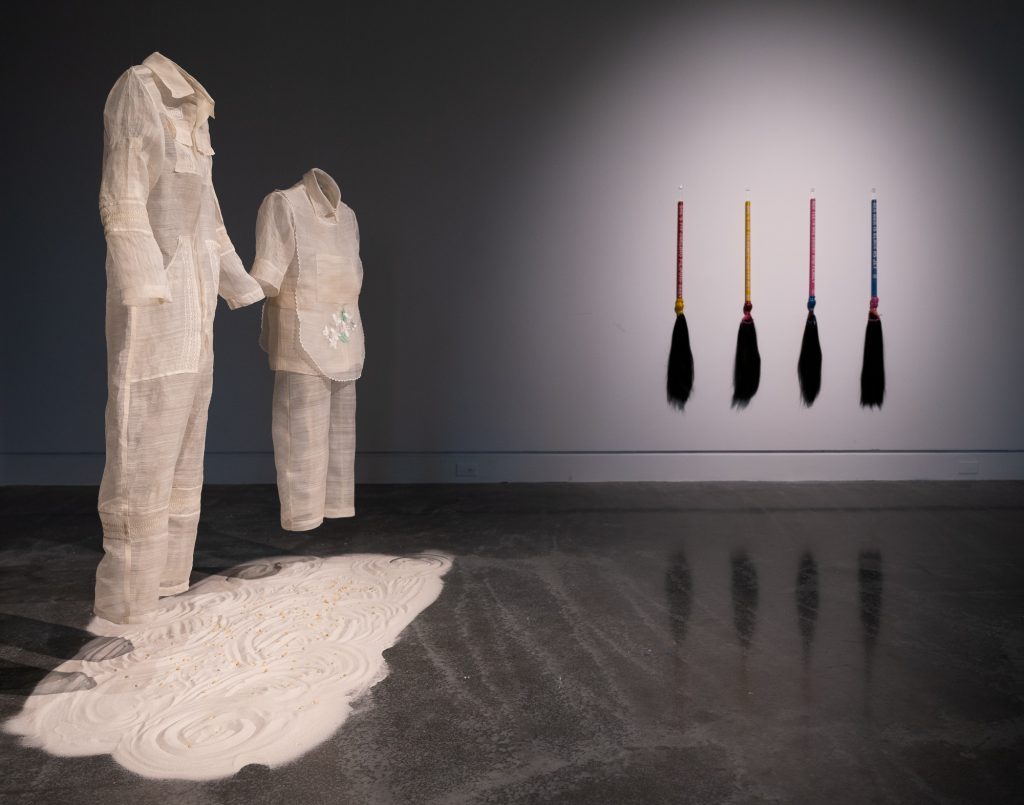
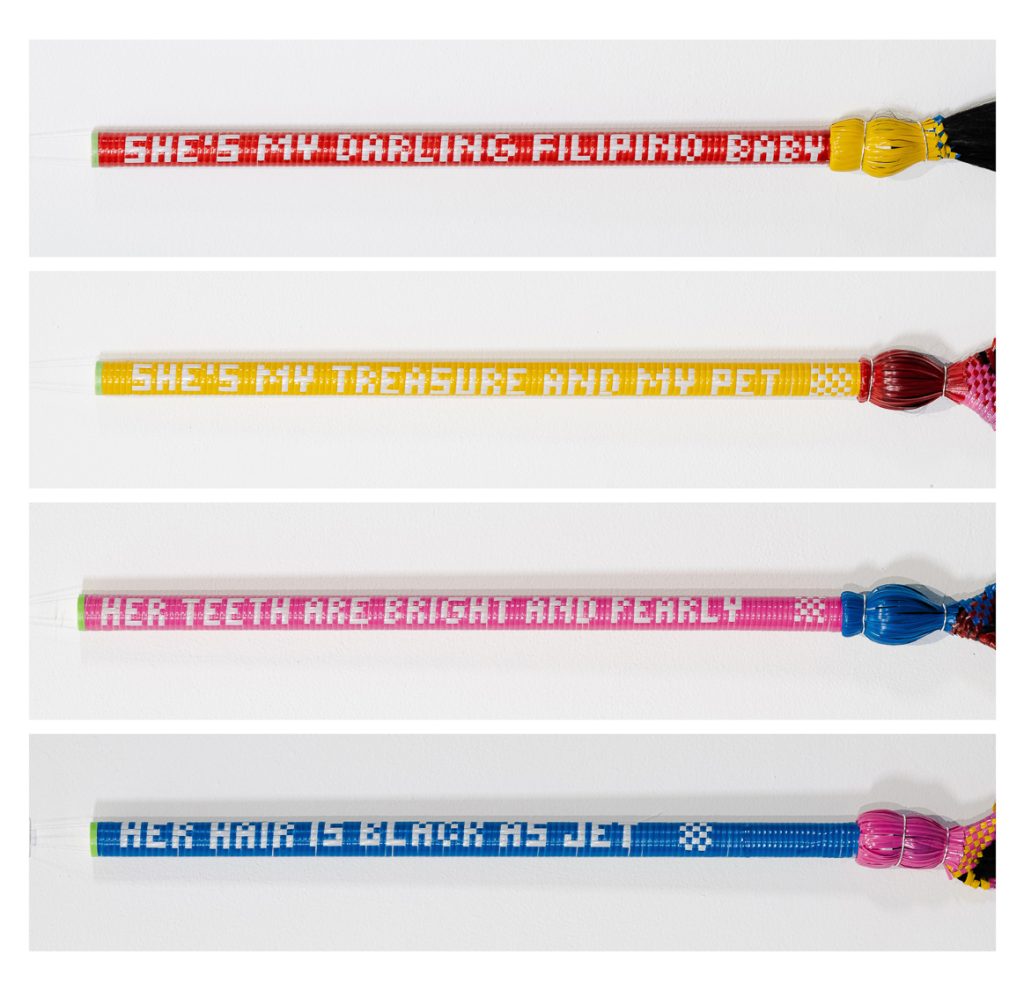
My Filipino Baby
2023
Human hair, plastic rattan, wood, and wire.
The text on the broom handles read as follows:
“She’s my darling Filipino Baby
She’s my treasure and my pet
Her teeth are bright and pearly
And her hair is black as jet”
– Chorus from “Ma Filipino Babe (1898)” by Charles Kassell Harris
Photo credit: David Sloan
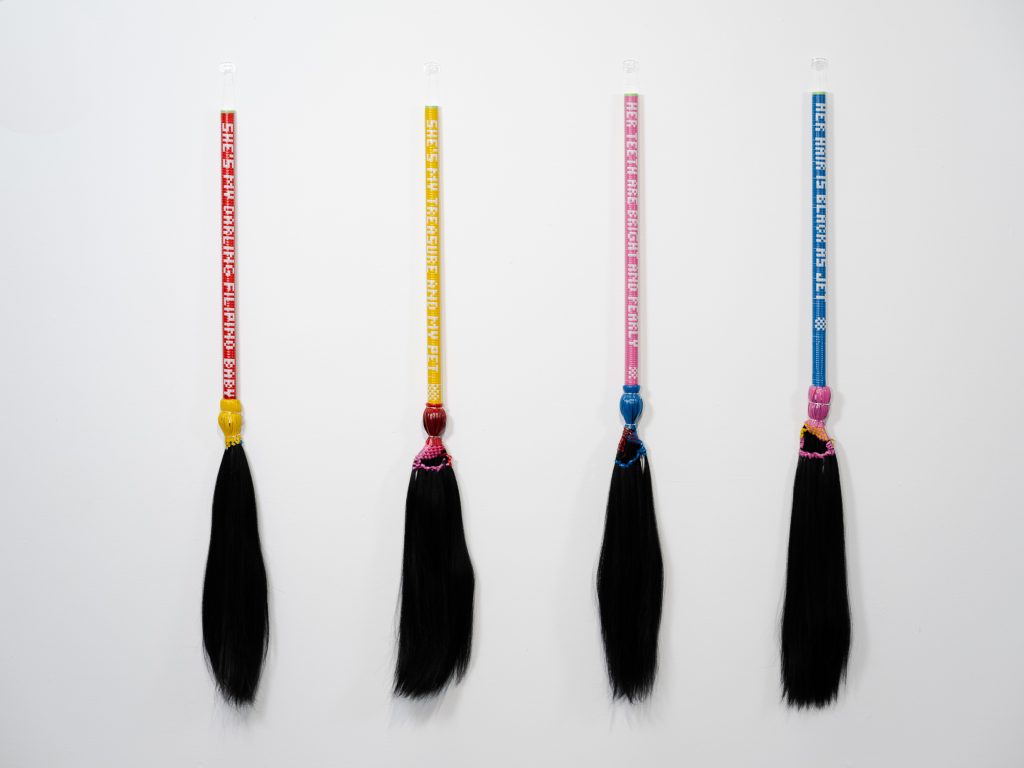
My Name Is Also Maria
2023
Skin whitening soap
As the soap ages, the soap yellows. The statues are arranged by their hue.
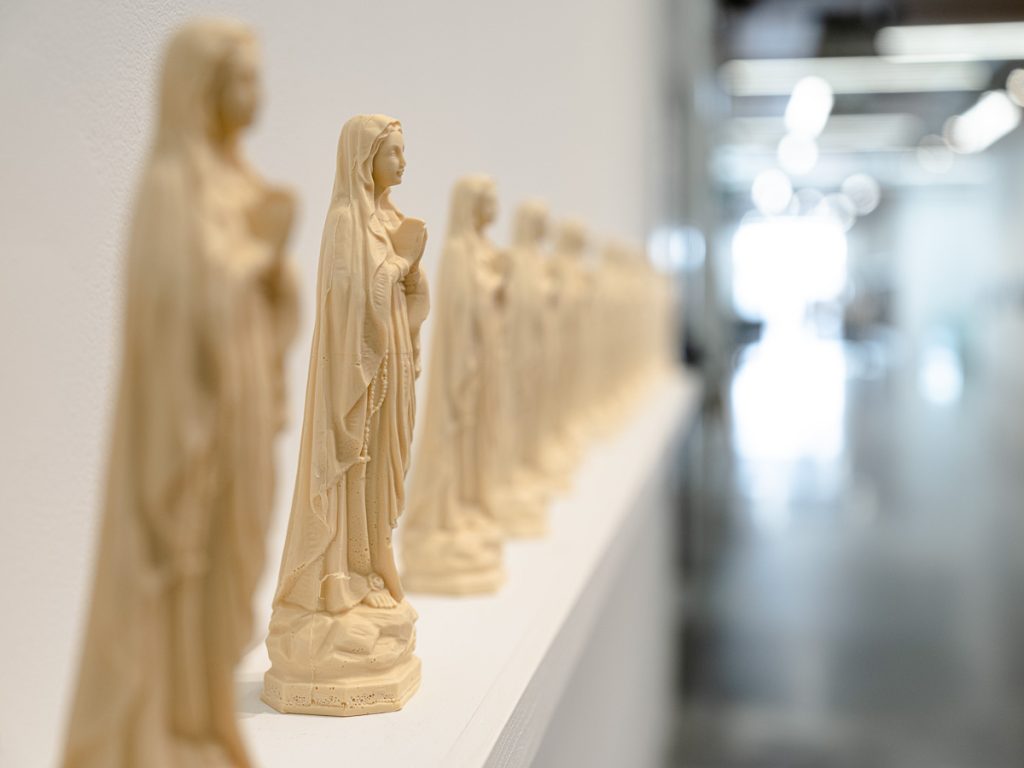
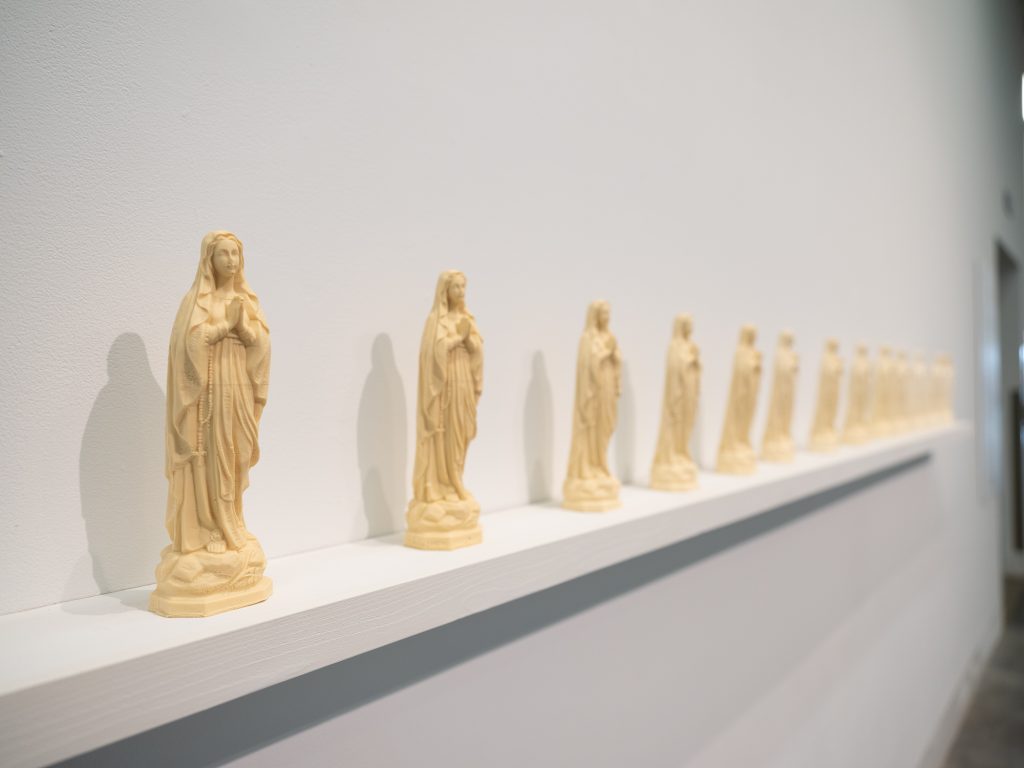

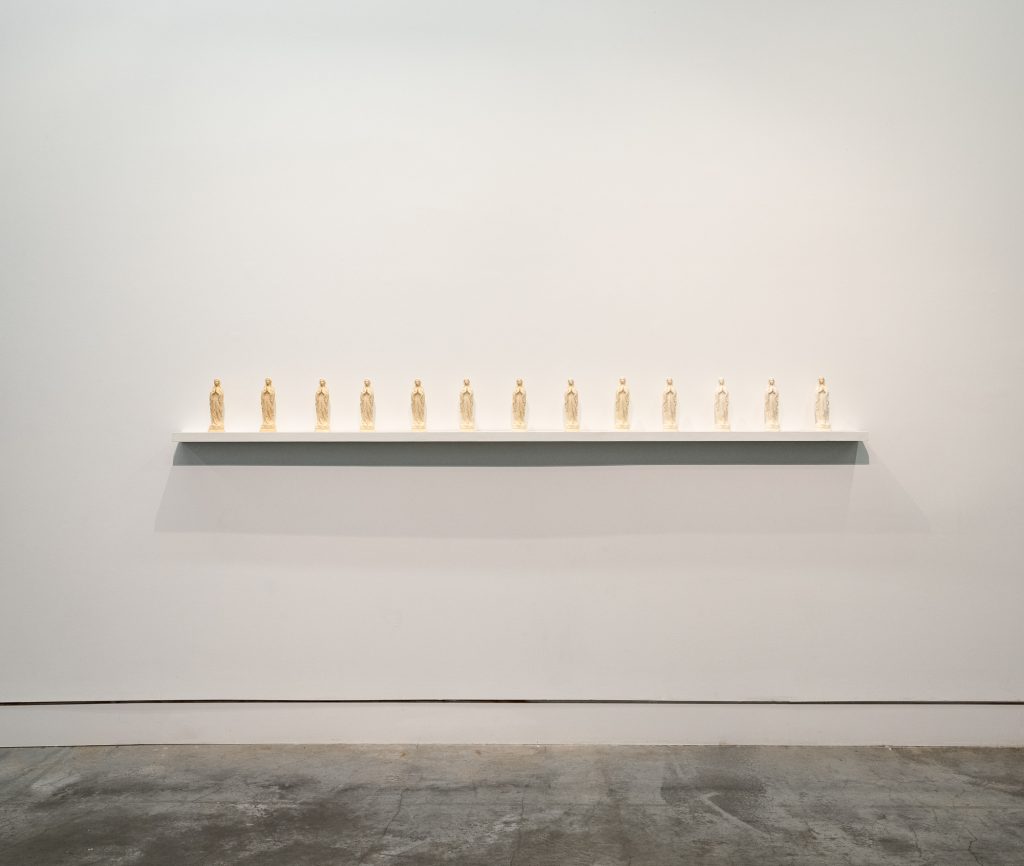
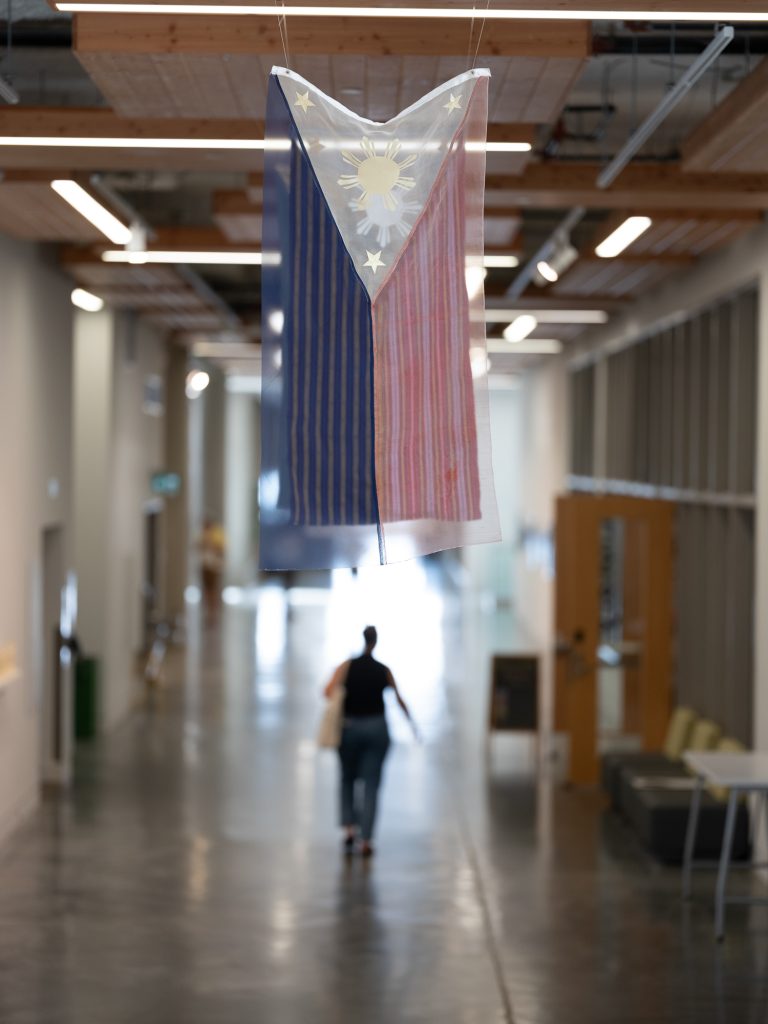
Flag Studies
2023
Machine embroidered piña cloth, traditional textiles from different parts
of the Philippines, and digitally printed polyester satin.
Flag Studies is a meditation on statecraft and how Philippine national identity is invented and imagined. This series also aims to critique the state-sanctioned “imaginings” of Philippine national identity, its ties to American imperial rule, and how its contemporary articulations evolve within the Philippine diaspora. For these studies, I use different types of fabric from all over the Philippines, along with imagery from various sources. The material histories of the textiles are again significant in conveying the complexity and overlaps within national identity and histories of commodification. The use of woven textiles from various parts of the Philippines is both a way to represent the myriad of indigenous communities largely unseen and show how the textiles have morphed for tourist consumption. Each flag speaks as a gesture or tangent, the collective expression fluctuates over time as new flags are added or reworked.
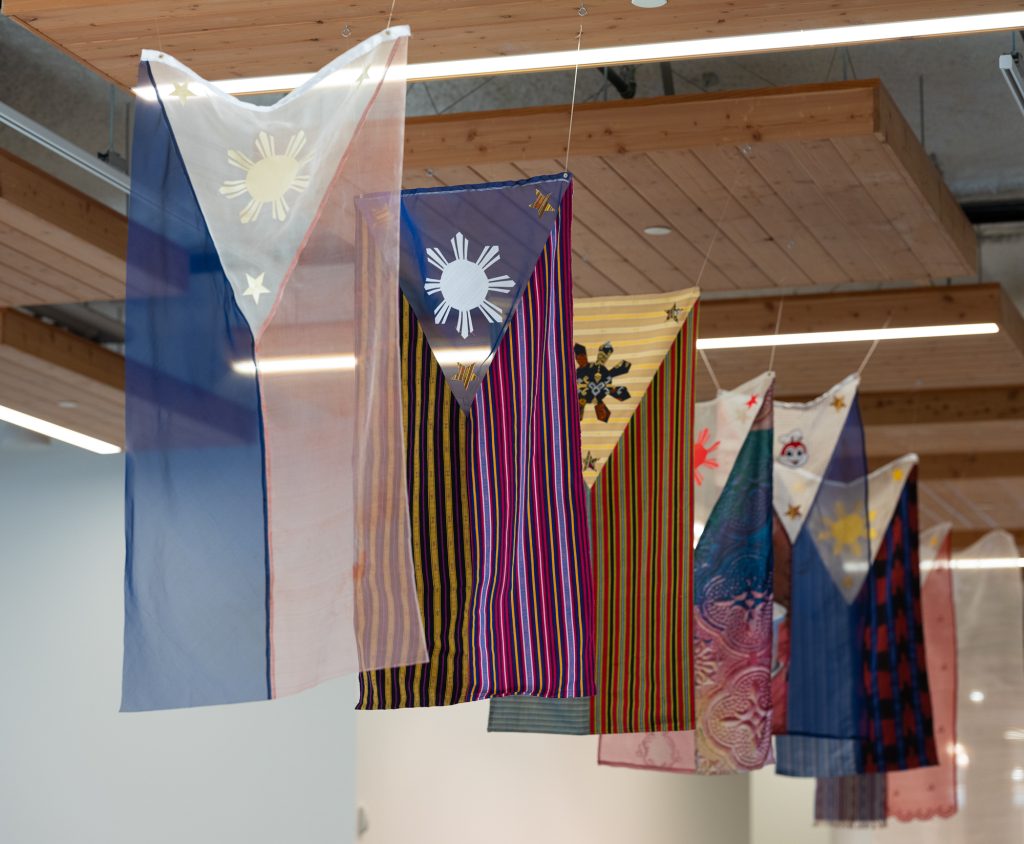
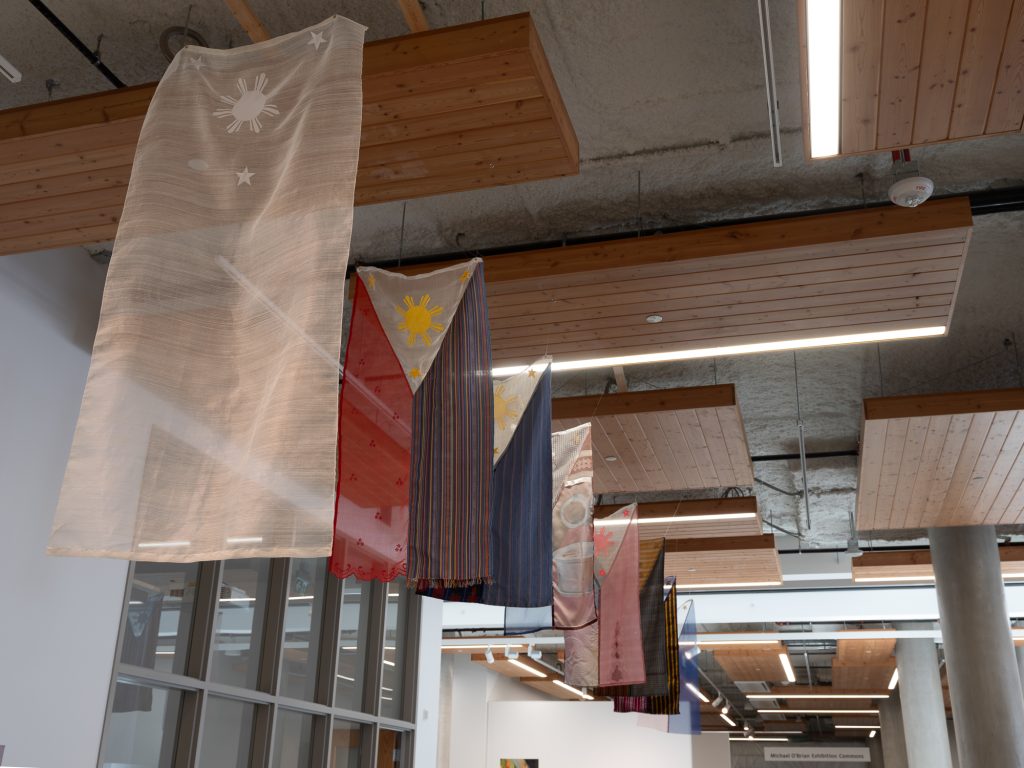
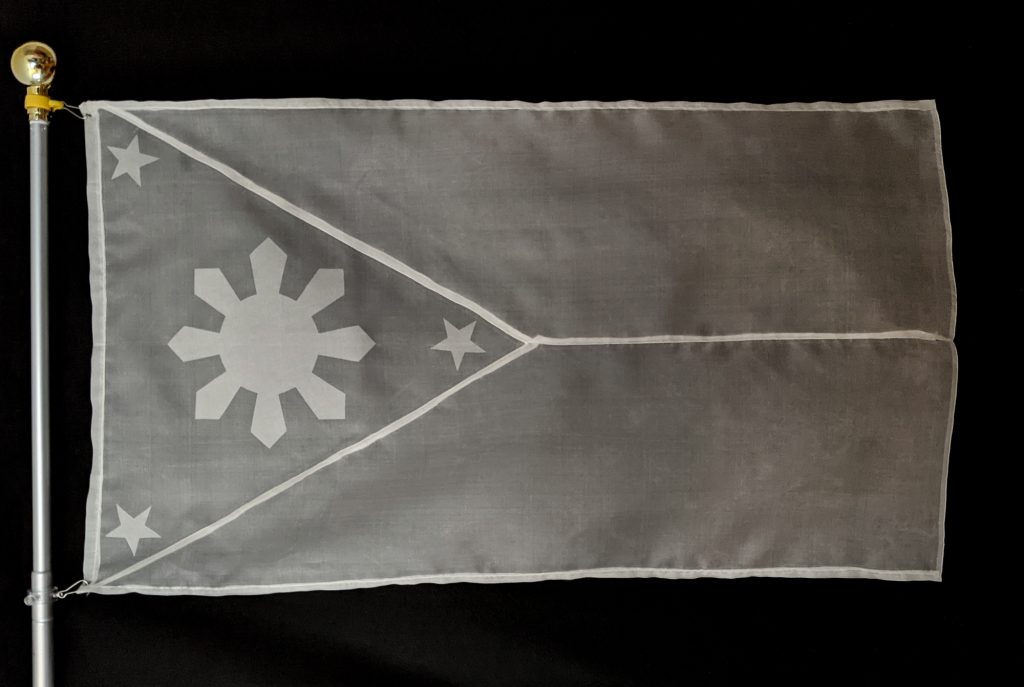
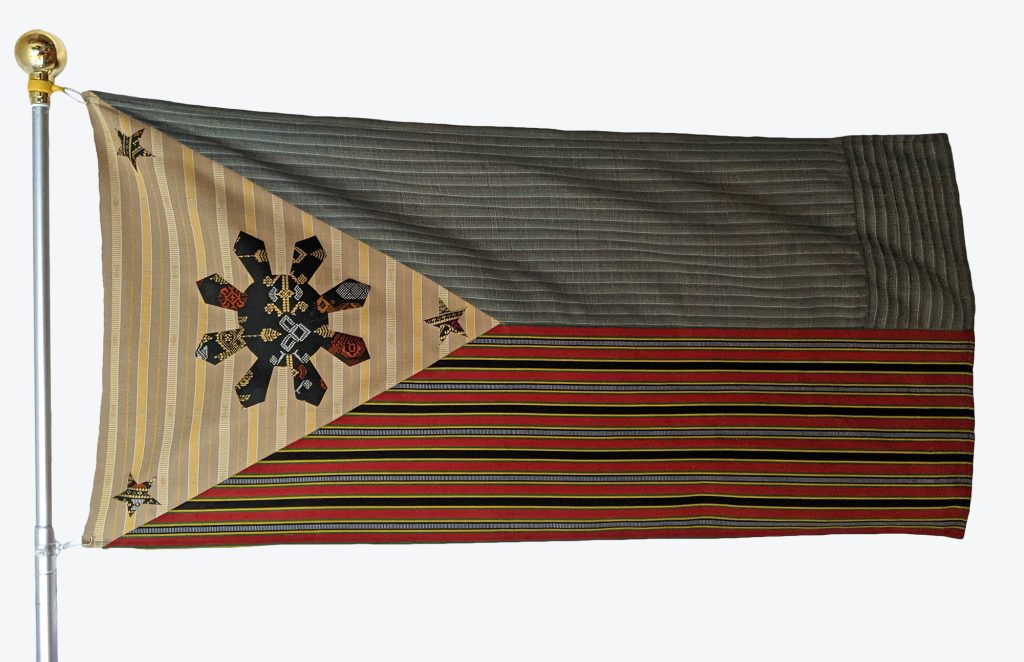
Selected Works
Still Life (Longing)
In progress
Commercial refrigerator containing goods purchased at Baltimore H-Mart: rambutan, bangus, green papaya, jackfruit, a can of corned beef, a can of Tocino Spam, banana heart, mangoes, calabaza, eggplants, sugar canes, ampalaya, and banana leaves
In Still Life (Longing), I create a still life informed by the gaze of displacement and nostalgia. I also emphasize how early colonial economies still inform modern global foodways. Presenting it as an installation within a commercial refrigerator was key to recalling the industrial mechanisms of globalized commerce and exchange. The selection of objects is also of significance. I wanted to collect from whichever city I am in (in this case, Baltimore) and buy what I can from what is locally available. I chose fruits, vegetables, and other goods that speak to what I love and relate to my Philippine upbringing. The selection also represents the extent of availability of Philippine goods within a certain area. Some goods, like the corned beef and Tocino Spam, point to outside culinary influences and may not be Philippine-made but their significance to the community and my ideation of the Philippines is enough to be included.
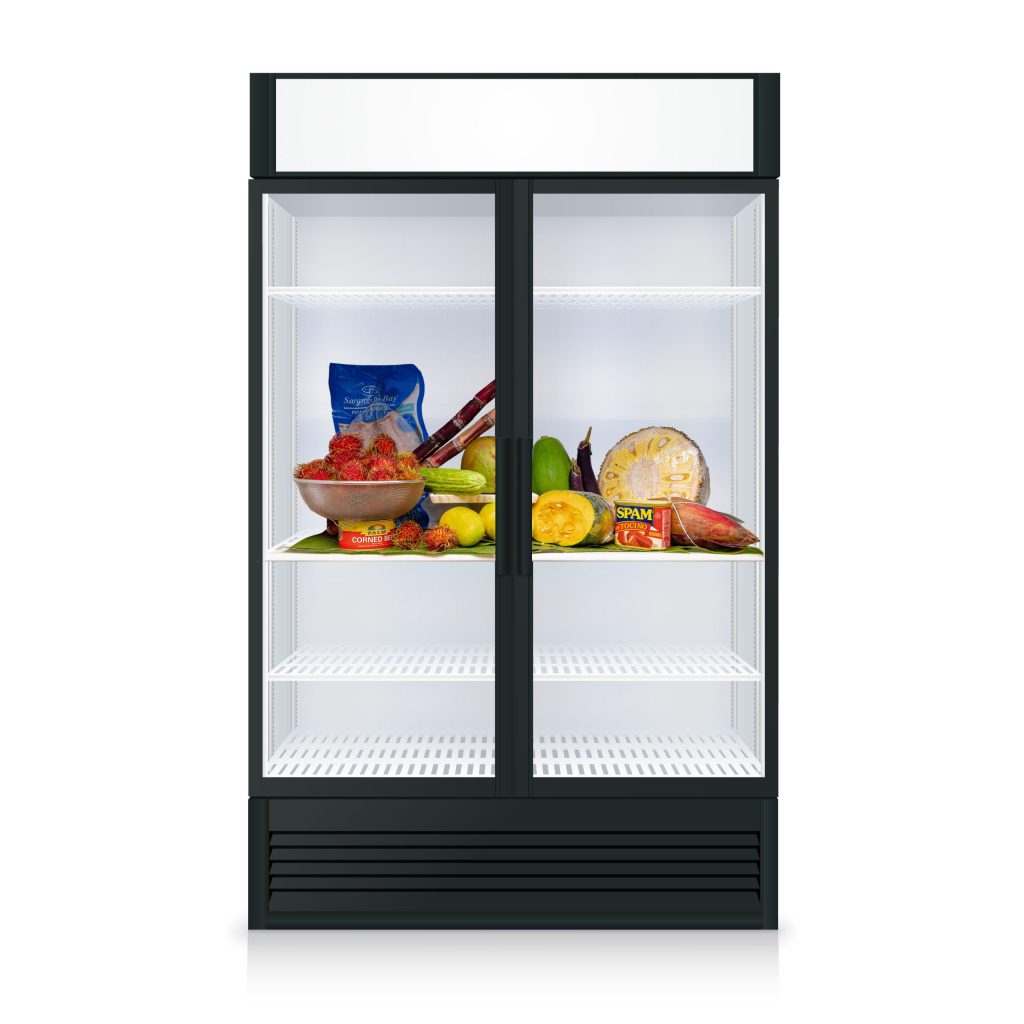
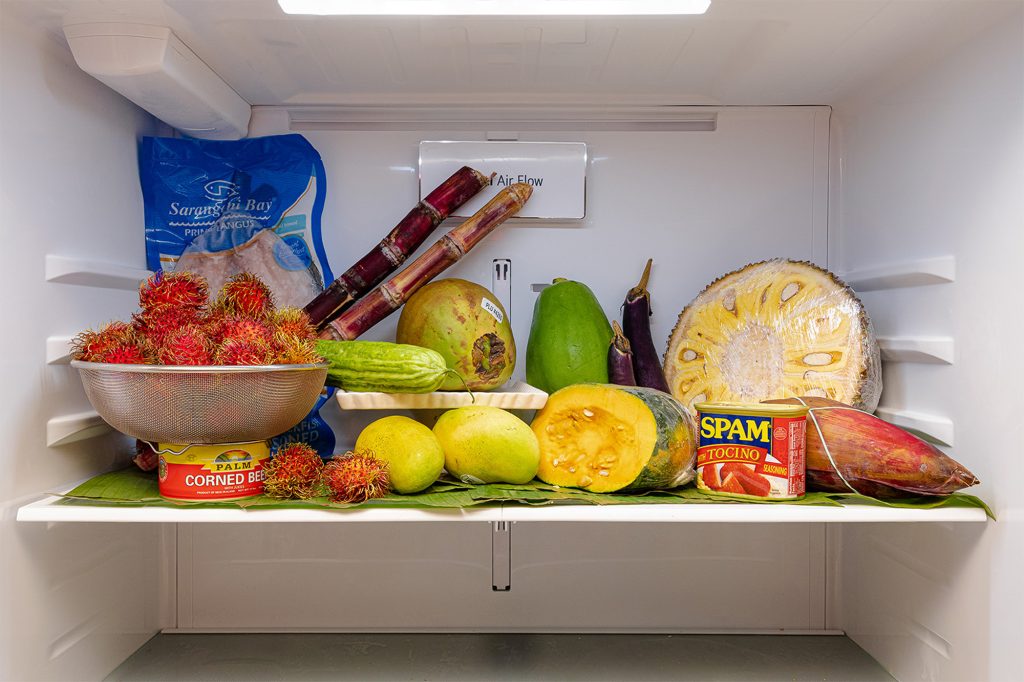
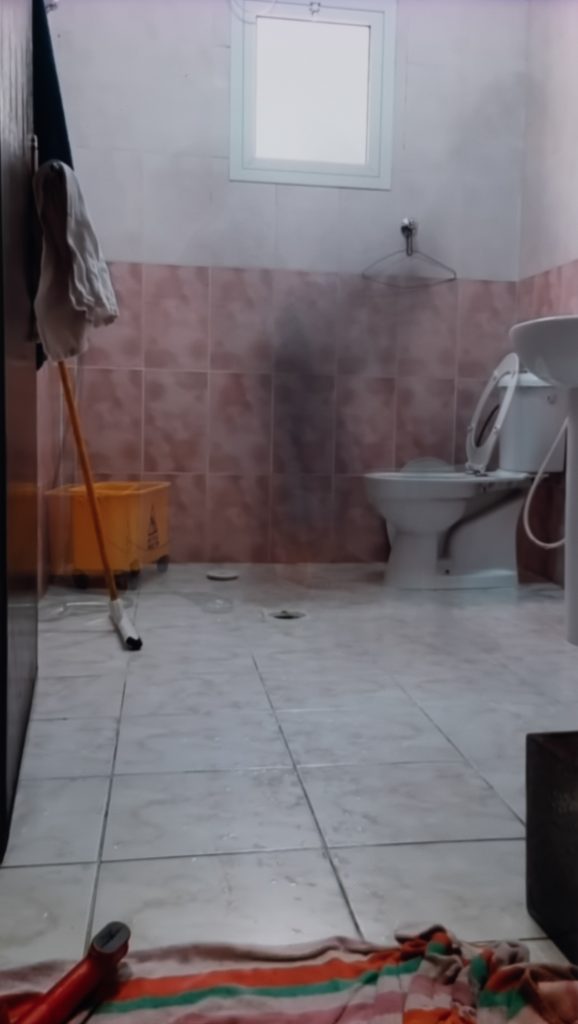
Multo (Apparitions) Series
Because of the hidden nature of domestic work, Philippine OCWs (overseas contract workers) hired for domestic labor endure abuses largely unknown outside of the Philippines.
In Multo (Apparitions), I wanted to highlight the invisibility of this labor force and question how we got to this moment of large-scale exportation of Philippine labor. I researched hours of YouTube content produced by OCWs in domestic service. Several OCWs would film themselves cleaning and working to show the extent of their labor for others wanting to become OCWs. I gathered clips of them working in regions with the largest concentrations of OCWs in domestic service. Using a separate digital camera, I created “ghostly apparitions” by doing a slow exposure of the YouTube videos.

